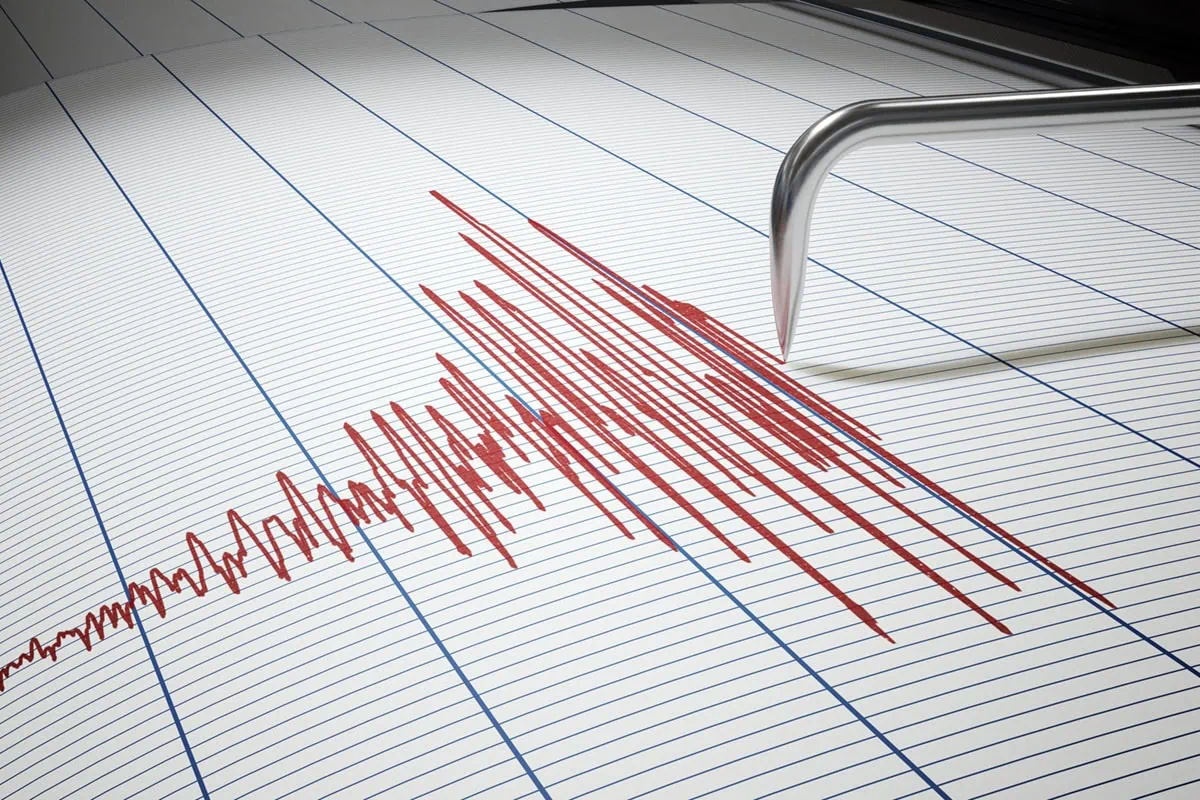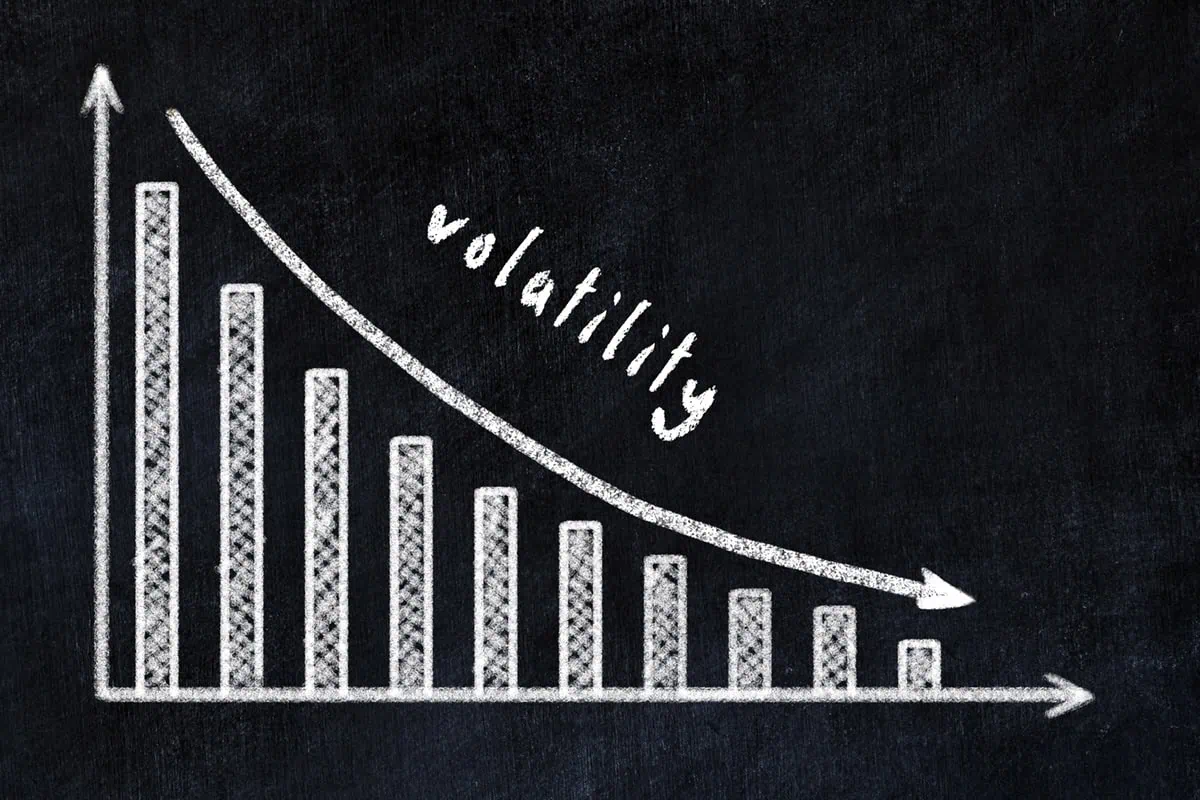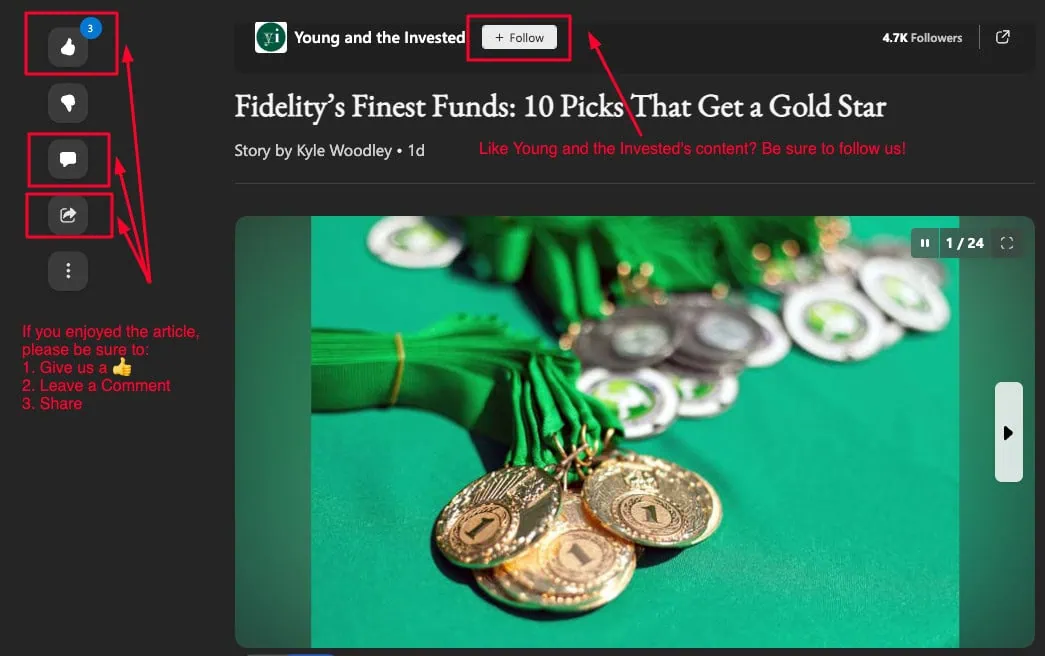Low-volatility and minimum-volatility exchange-traded funds (ETFs) are among Wall Street’s favorite hidey-holes during times of stock-market turbulence.
For good reason.
Any time stocks start to tumble, financial media begins flooding the zone with a few choice words. You’ll hear “correction” (a 10%-plus drop) if things are bad, and “bear market” (a 20%-plus drop) if things get really dicey.
But you’ll also hear “volatility,” which is simply a measurement of an asset’s up and down moves. And when people start talking about stock market volatility, it’s usually because volatility is high—a poor environment for most equities.
In this article, I’m going to introduce you to some of the best low- and minimum-volatility ETFs you can buy. But first, I’m going to teach you a little bit about volatility, its connection to down markets, and how these funds attempt to chill your portfolio out.
Disclaimer: This article does not constitute individualized investment advice. These securities appear for your consideration and not as personalized investment recommendations. Act at your own discretion.
Editor’s Note: Tabular information presented in this article is up-to-date as of April 24, 2025.
Table of Contents
What Is Volatility?

Rather than try to reinvent the wheel, I’m just going to pluck a few definitions of volatility from across the web so you can get a concrete picture:
— Investopedia: “Volatility is how much and how quickly prices move over a given span of time.”
— Wikipedia: “Volatility (usually denoted by “σ”) is the degree of variation of a trading price series over time.”
— Financial Industry Regulatory Authority (FINRA): “Some days market indexes and stock prices move up and other days they move down.”
Three very different organizations. Three very similar definitions. (Though I’m surprised the most conversational definition came from the regulatory organization. Good on you, FINRA.)
Stocks go up. Stocks go down. That’s volatility!
What Are Low-Volatility ETFs?

Low-volatility ETFs, as the name suggests, try to hold the lowest-volatility stocks within a selection universe. For instance, an S&P 500 low-vol ETF would try to hold the lowest-volatility stocks in the S&P 500, based on, say, beta or standard deviation (two common measures of volatility).
There are numerous twists on this, of course—low-vol ETFs focus on stocks of varying sizes, or stocks that pay high dividends, or stocks in other countries.
Minimum-volatility ETFs are similar to low-volatility ETFs in that they try to reduce volatility, but they go about it in a starkly different way. Rather than holding the lowest-volatility stocks within their selection universe, min-vol funds try to create the lowest-volatility portfolio possible … even if doing so involves owning some volatile stocks.
How would that work? If you own several stocks that are volatile, but whose performances aren’t really correlated with one another, they could balance each other out to an extent, creating a portfolio that overall doesn’t exhibit much volatility.
Do Low- and Minimum-Volatility ETFs Work?

In a word: Yes. Both types of funds have historically been effective in limiting downside during periods of stock-market declines. Consider this from MFS Investment Management, which studied low- and min-vol strategies during downturns over the past 20 years:
“Lower-risk strategies highlighted by minimum- and low-volatility indices have managed to keep up with their cap-weighted counterparts while also meeting expectations to provide downside protection in the most severe drawdowns, the early 2020 drawdown being the exception.”
Don’t let that 2020 outlier deter you. As I mentioned in my article outlining the best ETFs for a bear market, bear markets aren’t all built the same way. And the 2020 COVID bear market was “extremely unusual in historical terms,” MFS says.
“In that short period of time, sectors that typically exhibited low volatility became much more volatile while those with higher forecasted volatility, such as technology, were viewed by investors as defensive in the new reality of remote work.”
Just understand that while low- and min-vol strategies are highly effective during down markets, that same lack of volatility can be a liability in bull markets. Remember: These stocks don’t move as much as the S&P 500, and that often cuts both ways—they move less on the way down, but they also move less on the way back up. It makes sense: When investors regain their optimism and aggressiveness, they often shed their defensive investments so they can buy more cyclical stocks with higher upside.
As a result, some investors will have small permanent allocations to these ETFs to provide a little stability while not sacrificing much upside, while more aggressive investors will buy and sell these funds depending on market conditions.
Related: 10 Monthly Dividend Stocks for Frequent, Regular Income
The Best Low- and Minimum-Volatility ETFs You Can Buy

Hopefully, you know quite a bit more about volatility, as well as the logic behind low- and min-vol strategies, than you did a few minutes ago. And if you’d like to learn even more, I have a few more thoughts following the ETFs.
But now that you have some knowledge to work with, let’s take a look at some of the most popular (and successful) low-volatility ETFs and minimum-volatility ETFs you can buy.
Do you want to get serious about saving and planning for retirement? Sign up for Retire With Riley, Young and the Invested’s free retirement planning newsletter.
1. Invesco S&P 500 Low Volatility ETF

— Style: Low-volatility U.S. large-cap stock
— Assets under management: $7.4 billion
— Dividend yield: 1.7%
— Expense ratio: 0.25%, or $2.50 per year on every $1,000 invested
The Invesco S&P 500 Low Volatility ETF (SPLV) is the biggest low-volatility ETF on the market. This straightforward ETF tracks the S&P 500 Low Volatility Index, which starts with the S&P 500’s components, narrows it down to the hundred components with the lowest realized volatility over the past 12 months, then “weights” each stock based on its lack of volatility. (Weighting refers to the percentage of fund assets invested in something, be it an asset, industry, sector, country, etc.)
Right now, this construction method has built a portfolio that’s high on financials (20%), utilities (18%), industrials (17%), and consumer staples (14%). Top individual holdings are who’s who of reliable blue-chip names, including Coca-Cola (KO), Berkshire Hathaway (BRK.B), and Colgate-Palmolive (CL).
Related: 7 Best High-Dividend ETFs for Income-Hungry Investors
So, what about that low volatility? Let’s look at beta, which is a common measure of volatility that compares an investment to a benchmark. For stocks, the benchmark is typically the S&P 500, and the benchmark is set at 1. A beta of less than 1 implies something is less volatile than the benchmark; a beta of more than 1 implies more volatility. SPLV has a beta of 0.57 right now, which implies that the ETF is 43% less volatile than the broader stock market.
That low volatility hasn’t always worked out during downturns (see: the COVID bear market), but it usually has, especially during longer periods of market sluggishness.
For instance, between June 2015 and May 2016, the SPLV delivered a 9% total return (price plus dividends) while the turbulent S&P 500 was marginally negative. During the 2022 bear market, SPLV only lost 15% compared to 24% for the S&P 500. And to its credit, it has fared well so far in 2025’s near-bear downturn, off just 2% to the S&P 500’s 15% from the last high set on Feb. 19.
If you want straightforward protection tethered to the U.S. stock market, Invesco’s fund is one of the best low-volatility ETFs you can buy.
Related: The 13 Best Mutual Funds You Can Buy
2. Vanguard U.S. Minimum Volatility ETF

— Style: Minimum-volatility U.S. large-cap stock
— Assets under management: $229.7 million
— Dividend yield: 1.5%
— Expense ratio: 0.13%, or $1.30 per year on every $1,000 invested
As I mentioned above, minimum-volatility ETFs aren’t quite the same as low-volatility ETFs. The idea isn’t to buy stable stocks, but to buy stocks that produce a stable portfolio.
The Vanguard U.S. Minimum Volatility ETF (VFMV) aptly expresses this idea: “[The] Fund invests in stocks that together have the potential to generate lower volatility than the broad U.S. equity market.”
Unlike many low- and min-vol strategies, VFMV isn’t index-based, but actively managed. Managers John Ameriks and Scott Rodemer try to achieve minimum volatility by investing across stocks of all sizes, market sectors, and industry groups, while also trying to limit exposure to stocks with relatively low liquidity.
Related: 7 Best Schwab Index Funds for Thrifty Investors
A great illustration of how low- and min-vol strategies take different paths is to look at how SPLV and VFMV differ from their benchmarks in how they hold stocks in the volatile technology sector.
— SPLV: ~5% tech (vs. ~30% for the S&P 500)
— VFMV: ~22% tech (vs. ~33% for the Russell 3000)
Yes, Vanguard’s fund has reduced tech exposure compared to the Russell 3000, but it’s still a large amount—in fact, tech is VFMV’s top holding. It’s just that management believes it can achieve lower volatility through a more balanced portfolio, and balanced it is. Its asset spread is much more even than the Russell 3000, with six other sectors (including traditional defensive areas such as health care, staples, and utilities) earning low-double-digit or high-single-digit weights. The result is a beta of 0.66—so, more volatile than SPLV, but not by much.
Vanguard U.S. Minimum Volatility came to life in 2018, so it doesn’t have a long track record. But thus far it has delivered defense in downturns and better upside than SPLV in up markets. Importantly, Ameriks and Rodemer came on board in 2022 and 2023, respectively, so “the new regime’s current strategy is not necessarily representative of the past,” Morningstar says. But the firm still gives VFMV a Gold Medalist rating and says “looking at their performance so far, they have posted notable results.”
Related: The 10 Best Index Funds You Can Buy
3. SPDR SSGA US Small Cap Low Volatility ETF

— Style: Low-volatility U.S. small-cap stock
— Assets under management: $180.9 million
— Dividend yield: 3.0%
— Expense ratio: 0.12%, or $1.20 per year on every $1,000 invested
Small-cap stocks are known for their relatively high volatility.
Fundamentally, it’s not difficult to figure out why. Small caps are inherently riskier as a group—compared to their larger-cap counterparts, they typically have fewer and less diverse revenue streams, less capital on hand, less (and pricier) access to capital, and less institutional investment, which can help stabilize stock returns over time. Conversely, though, it’s much easier to deliver high rates of growth, and the same nominal dollar amount of share purchases in a small cap will have a bigger impact on their stock price.
Volatility is a major component of small caps’ appeal and their riskiness. So what happens if you reduce that volatility?
A look at the SPDR SSGA US Small Cap Low Volatility ETF (SMLV) can give us an answer.
The SMLV’s tracking index starts with a universe of stocks whose market caps rank between 1,001 and 3,000, then includes (and ranks) low-volatility stocks based on a five-year measurement of standard deviation. No stock can account for more than 5% of the index, nor more than 20 times the stock’s weighting within the index universe.
Related: Best Vanguard Funds to Hold in an HSA
The current portfolio is more than 400 stocks wide. The biggest weightings are to the financial (32%), industrial (15%), and real estate sectors (11%), while the defensive consumer staples and utility sectors make up just 5% of assets each. While that might sound surprising, it’s important to remember that:
1. The small-cap universe SMLV draws from is different from the S&P 500. For instance, consumer staples and utilities are among the smallest sectors in this universe. Compared to that universe, however, they’re actually better-represented in SMLV.
2. A sector’s defensive qualities might be different depending on company size and market periods. For instance, smaller regional banks have actually been less volatile than bigger financial firms over the trailing three and five years. But they’ve been more volatile longer-term.
The resulting portfolio provides a beta of 0.88, which is less volatile than the S&P 500, though not by much … but it’s a lot more impressive when you consider that the small-cap Russell 2000 (which is a good comparison for SMLV) actually has a much higher beta than the market, at 1.17.
But what’s most remarkable about SMLV is its performance. Yes, the Russell 2000 tends to provide more upside in roaring bull runs, as you’d expect—but even then, SPDR’s fund has beaten the Russell 2000 on a total-return basis (price plus dividends) over every meaningful time period since inception in 2013, and in six of the past 10 years. In short, at least so far, SMLV hasn’t just been one of the best low-volatility ETFs to buy … it has been one of the best ways to buy small-cap stocks.
Related: The 10 Best Fidelity Funds You Can Own
4. iShares MSCI EAFE Min Vol Factor ETF (EFAV)

— Style: Developed-market low-volatility stock
— Assets under management: $5.1 billion
— Dividend yield: 2.9%
— Expense ratio: 0.20%, or $2.00 per year on every $1,000 invested
We can apply low- and minimum-volatility strategies across the pond, too.
The iShares MSCI EAFE Min Vol Factor (EFAV), at more than $5 billion in assets under management, is the most popular way to get this kind of exposure. This is a min-vol strategy that attempts to provide exposure to developed-market stocks in the EAFE (Europe, Australia, and the Far East) with lower volatility compared to the MSCI EAFE Index.
Related: 7 Best Schwab Retirement Funds
Importantly, EFAV is still trying to give you exposure that’s similar to MSCI EAFE, so it has certain restraints:
— If a country has a weight of more than 2.5% in the MSCI EAFE, the MSCI EAFE Minimum Volatility Index won’t deviate more than 5% in either direction from that weight.
— If a country has a weight of less than 2.5%, its weight in the min-vol index will be capped at three times that weight.
— Sector weights won’t deviate from their weight in the MSCI EAFE by more than 5% in either direction.
Also, no stock will be weighted at more than 1.5% or 20 times the stock’s weight in the MSCI EAFE Index, whichever is lower.
The result is a roughly 230-stock portfolio that’s most heavily weighted in Japan (25%), but also has a lot of concentration in Switzerland (13%), the U.K. (10%), and France (8%). Financials and industrials are top sector weights, but at lower percentages than in the plain MSCI EAFE Index. Health care, consumer staples, and utilities, meanwhile, enjoy greater weightings. And as is typical with a predominantly large-cap developed-market ETF, EFAV throws off a yield that’s superior to the S&P 500, at nearly 3% currently.
Since inception in 2011, EFAV has delivered not just the downside outperformance you’d expect, but also overall returns similar to its volatility-indifferent brother, the iShares MSCI EAFE ETF (EFA). That makes EFAV one of the best minimum-volatility ETFs you can buy for international exposure.
Related: 10 Best Vanguard Funds for the Everyday Investor
5. iShares MSCI Emerging Markets Min Vol Factor ETF (EEMV)

— Style: Emerging-markets low-volatility stock
— Assets under management: $4.1 billion
— Dividend yield: 3.5%
— Expense ratio: 0.26%, or $2.60 per year on every $1,000 invested
The iShares MSCI Emerging Markets Min Vol Factor ETF (EEMV) is a sister fund to EFAV that focuses on emerging, rather than developed, markets.
While there is no concrete term for developed markets, they’re generally considered to be countries with relatively established and stable economies; accessible, transparent, regulated, and less volatile markets; and political stability—and with that overall security often comes lower levels of growth.
On the flip side, emerging markets are comparatively weaker in all of the aforementioned areas—but they also tend to boast rapid industrialization and growing economies, which lend themselves to more market-growth potential.
Related: The Best REITs to Invest In
EEMV functions similarly to EFAV, but its geographical spread is considerably different—it’s instead concentrated in emerging Asia, the Middle East, Eastern Europe, and South America. Top country weights at the moment are China and India at about a quarter of assets each, as well as Taiwan (14%) and Saudi Arabia (9%).
From a sector perspective, cyclical sectors such as financials and technology still lead, just like they do in the volatility-indifferent emerging-markets index, but at lower weights. Meanwhile, health care, utilities, and consumer staples account for more assets in EEMV than they do in the plain index.
Emerging markets have generally been volatile since EEMV’s inception in 2011. Little surprise, then, that the low-volatility ETF has not only provided more downside protection, but better overall returns, than the basic iShares MSCI Emerging Markets ETF (EEM) since hitting the market.
Related: 7 Best Value Stocks for 2025 [Smart Picks to Buy]
6. Franklin International Low Volatility High Dividend ETF

— Style: International low-volatility dividend stock
— Assets under management: $2.3 billion
— Dividend yield: 3.5%
— Expense ratio: 0.40%, or $4.00 per year on every $1,000 invested
The Franklin International Low Volatility High Dividend ETF (LVHI) helps us cover our bases on a couple of fronts: It helps us target lower volatility in the international portion of your portfolio, and it demonstrates how dividends can be helpful in providing stability.
Here’s how LVHI builds its 140-stock portfolio:
The fund starts by reviewing the MSCI World ex-US IMI Index, which is made up of more than 3,000 stocks of all sizes across numerous countries. It uses a proprietary screen to identify “profitable companies that have the potential to pay relatively high sustainable dividend yields.” It then scores those dividend stocks based on price and earnings volatility; higher-scoring stocks get larger weightings.
But there are constraints. Every quarter, the fund rebalances so that no stock accounts for more than 2.5% of assets, no sector accounts for more than 25% (except real estate investment trusts [REITs], which can’t exceed 15%), no country accounts for more than 15% of assets, and no individual geographic region exceeds 50%.
For instance, right now, Japan is the greatest country weight at 14%, followed by the U.K. (13%) and Canada (12%). Financials are the largest sector allocation at 23%, followed by energy (15%) and materials (10%). Top holdings include the likes of Italian bank Intesa Sanpaolo Group (ISNPY), Swiss consumer giant Nestlé (NSRGY), and French energy firm TotalEnergies (TTE).
Related: 7 Best Vanguard Retirement Funds
A reliance on international large caps results in a fine yield of 3.5%, which is nearly triple what the S&P 500 offers at present. Those dividends represent returns that are largely separated from price—even if the stocks themselves don’t perform well, that 3.5% in dividends can help make up for a little of that shortfall.
Franklin’s low-vol international fund isn’t terribly old, having hit the market in 2016. But it has performed well so far, outdoing 80% of its large-cap foreign-stock peers over the past five years, including a positive return in 2022 when competitors in its category were down 9% on average, and less than half the losses of the S&P 500 during the current 2025 downturn.
Morningstar also likes LVHI’s prospects going forward, citing its “impressive long-term risk-adjusted performance” and “cost advantage” in awarding the fund its Silver Medalist rating.
Want to learn more about LVHI? Check out the Franklin Templeton provider site.
Related: 7 Best Schwab Funds You Can Buy: Low Fees, Low Minimums
7. Invesco QQQ Low Volatility ETF (QQLV)

— Style: U.S. low-volatility large-cap stock
— Assets under management: $2.4 million
— Dividend yield: 1.5%
— Expense ratio: 0.13%, or $1.30 per year on every $1,000 invested
OK. I’m not going to count a fund that came out less than a year ago among the best low-volatility ETFs on the market. It’s just too early to tell.
But I’m adding the Invesco QQQ Low Volatility ETF (QQLV) to this list because it’s an interesting spinoff of what has been one of the most productive mega-ETFs of the past couple decades.
The Invesco QQQ Low Volatility ETF is extremely straightforward, investing in roughly a quarter of the stocks within the Nasdaq-100 that have exhibited the least volatility over the past 12 months. The Nasdaq-100, which investors can buy through the $175 billion Invesco QQQ Trust (QQQ), is itself made up of the 100 largest non-financial companies listed on the Nasdaq stock exchange.
Related: Best Money Market Alternatives [Low-Risk Yields]
The Nasdaq-100 is often referred to as a “tech proxy” because it’s so heavily exposed to the sector, which currently makes up roughly 60% of assets right now through holdings such as Apple (AAPL) and Microsoft (MSFT). Another 20% is invested in consumer discretionary companies, including the very tech-esque Amazon (AMZN). So it’s not a straight-up tech-sector fund, but it’s mighty close. And that has largely been to QQQ’s favor. Even factoring in technology’s underperformance of late, the QQQ has massively outperformed the S&P 500, 1,300% to 550%, over the past 20 years.
It would seem almost foolish, then, to neuter what works, which is effectively what QQLV does. Technology makes up less than a quarter of assets vs. its 60% in QQQ, and it’s not even the largest sector holding—staples stocks like Keurig Dr Pepper (KDP) and Coca-Cola Europacific Partners (CCEP) make up a full 25%. Industrials, utilities, and consumer discretionary stocks all have double-digit weightings, too.
However, QQLV’s launch couldn’t have been better-timed for proof of concept. It’s a good guess that the low-volatility Q’s will underperform the original Q’s in bull markets, but QQLV has performed admirably during the 2025 downturn, off just 4% since the Feb. 19 peak—far better than the QQQ’s 20% loss, and holding its own against the likes of SPLV and VFMV.
Related: The 7 Best T. Rowe Price Funds to Buy and Hold
Do you want to get serious about saving and planning for retirement? Sign up for Retire With Riley, Young and the Invested’s free retirement planning newsletter.
Watch Out for High Volatility

When people say the market “is volatile,” what they typically mean is that the market “is highly volatile.” In other words, stocks are moving up and down rapidly.
And that—high volatility—is when things tend to turn sour for stocks.
We’ll get to more scientific ways to measure stock market volatility in a moment. But as a general rule, if stocks spend a prolonged time moving up and down by more than 1% per day, your average market watcher would likely tell you that stocks are volatile.
That doesn’t sound so bad in a bubble. Stocks could theoretically go down 1%, then up 3%, then down 1%, then up 3%, and hey, you’d have some nice gains in a volatile market.
The theory sounds nice, but that’s rarely how it plays out in practice.
Crestmont Research evaluated S&P 500 Index data from 1962 through the end of 2024, measuring performance across four different quartiles of annual volatility. Here’s a look at a few stats from each quartile (volatility range in parentheses):
— 1st Quartile (0%-1.0%): 94% chance of an up year, 16.2% average gain in up years, 1.5% average loss in down years, expected gain of 15.0%
— 2nd Quartile (1.0%-1.4%): 80% chance of an up year, 17.2% average gain in up years, 4.5% average loss in down years, expected gain of 12.8%
— 3rd Quartile (1.4%-1.7%): 81% chance of an up year, 17.4% average gain in up years, 7.8% average loss in down years, expected gain of 12.7%
— 4th Quartile (1.7%-2.7%): 38% chance of an up year, 15.1% average gain in up years, 18.6% average loss in down years, expected loss of 5.9%
Broadly speaking, years with low volatility were more likely to be positive (and when they weren’t, the damage was relatively more contained) than years with high volatility. Up years could be more productive during periods of relatively high volatility, but they were less productive when the markets were extremely volatile.
Why? The oversimplified but directionally correct answer is “markets hate uncertainty.” Big swings up and down are an indication that investors aren’t all on the same page about where stocks and other investments should be priced. It’s also a risky environment in which to invest—people get a little skittish about the possibility of buying something that could lose 3% or 4% the very next day!
Related: Direct Indexing: A (Tax-)Smarter Way to Index Your Investments
How Do You Measure Volatility?

Volatility can be measured by several metrics, but a commonly used one is “beta.” Beta measures a security’s volatility compared to a benchmark—and with stocks, that benchmark is typically the S&P 500.
The benchmark (the S&P 500) will have a beta of 1.0. A stock that has a beta of more than 1.0 is considered more volatile, and a stock with a beta of less than 1.0 is considered less volatile. So, if a stock had a beta of 0.5, it would be considered half as volatile as the broader market. (Stocks can have negative beta, too, which means that a stock has an inverse relationship with the market. For instance, a stock with a beta of -0.5 would be considered half as volatile as the market, too, but it could also be expected to move in the opposite direction of the market.)
How do you measure the volatility of the market itself? Well, the most popular way of doing that is the CBOE Volatility Index (VIX). Technically, the VIX measures expected future volatility, doing so by examining prices of certain S&P 500 options. While there are no set “this is high, this is low” values, a VIX reading over 30 is generally considered highly volatile, while a reading under 20 is low in volatility. The VIX’s long-term average is a hair over 20.
Want to talk more about your financial goals or concerns? Our services include comprehensive financial planning, investment management, estate planning, taxes, and more! Schedule a call with Riley to discuss what you need, and what we can do for you.
Related: 13 Best Long-Term Stocks to Buy and Hold Forever

As even novice investors probably know, funds—whether they’re mutual funds or exchange-traded funds (ETFs)—are the simplest and easiest ways to invest in the stock market. But the best long-term stocks also offer many investors a way to stay “invested” intellectually—by following companies they believe in. They also provide investors with the potential for outperformance.
So if you’re looking for a starting point for your own portfolio, look no further. Check out our list of the best long-term stocks for buy-and-hold investors.
Related: 10 Best ETFs to Beat Back a Bear Market

Bear markets are relatively rare, and relatively short-lived—U.S. stock markets have spent only about 20% of the past 90-plus years mired in downturns of 20% or more, and on average, they only last a little longer than a year.
But they do happen, and they can be painful.
We say to hope for the best, but always be prepared for the worst. You can do that by checking out our 10 favorite ETFs to stay afloat during a bear market.
Please Don’t Forget to Like, Follow and Comment

Did you find this article helpful? We’d love to hear your thoughts! Leave a comment with the box on the left-hand side of the screen and share your thoughts.
Also, do you want to stay up-to-date on our latest content?
1. Follow us by clicking the [+ Follow] button above,
2. Subscribe to Retire With Riley, our free weekly retirement planning newsletter, and
3. Give the article a Thumbs Up on the top-left side of the screen.
4. And lastly, if you think this information would benefit your friends and family, don’t hesitate to share it with them!








